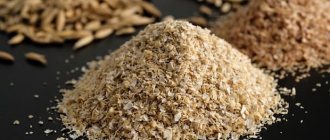There are a considerable number of vitamins in this root vegetable, which puts it on a par with valuable and irreplaceable vegetables. The presence of beta-carotene in this vegetable is a good preventative against cancer.
The bright and rich color of the product indicates the significant presence of this useful element. There is an argument that the systematic use of carrots with such beneficial properties in the diet prolongs life.
A medium-sized carrot covers the daily requirement for vitamin A. A lack of beta-carotene can cause cataracts, the formation of kidney stones and other ailments.
Carrots and their beneficial qualities
- Carrots help enhance redox currents;
- She is a regulator of carbohydrate metabolism;
- Helps regulate body tone;
- Recommended as a laxative;
The complex of vitamins and other necessary elements stored in the root crop exhibits a significant strengthening effect. The vitamins contained in the composition regulate metabolism, help cleanse the blood, and improve immunity.
Carrots - for vision and beauty
The healthy root vegetable stores a significant amount of vitamin A, which is responsible for growth development, which is why it is valuable for children. In addition, it helps improve visual acuity and protects the human body from the formation of various infectious diseases.
This substance gives the necessary help to the external appearance: it delays the deterioration of the skin, helps strengthen hair and nails, gives the skin a blooming appearance, and is useful during pregnancy and lactation;
The optimal composition of useful elements in carrots is a valuable gift from nature
- B vitamins contained in carrots contribute to the proper functioning of the central nervous system;
- Help in the fight against migraines, insomnia and excessive fatigue;
- Elements of this group affect cholesterol levels and are preventive
- a remedy for high blood pressure;
- Prevention of the formation of thrombosis, heart and vascular diseases;
Composition and calorie content
Carrots are a low-calorie vegetable. There are only 35 calories in 100 g of product. The root vegetable is 89% water. It contains 6% carbohydrates, 1.2% proteins, 0.2% fats. The remaining percentage composition is plant fibers, organic acids and ash elements.
Carrots contain many vitamins.
They are well absorbed and have a beneficial effect on metabolism and the functioning of the digestive tract. One of the main elements of root vegetables is carotene. It is considered the main source of vitamin A, which is very important for visual acuity. Table of vitamins and minerals contained in carrots
| Name | Contents per 100 g of vegetable |
| Retinol (A) | 0.02 mg |
| Thiamine (B1) | 0.1 mg |
| Riboflavin (B2) | 0.1 mg |
| Niacin (B3) | 1.3 mg |
| Pantothenic acid (B5) | 0.3 mg |
| Pyridoxine (B6) | 0.1 mg |
| Folic acid (B9) | 9 mcg |
| Ascorbic acid (C) | 5 mg |
| Tocopherol (E) | 1 mg |
| Beta carotene | 12 mg |
| Vitamin K | 13 mcg |
| A nicotinic acid | 1.2 mg |
| Biotin | 0.1 mcg |
| Iron | 1.5 mg |
| Calcium | 45 mg |
| Potassium | 200 mg |
| Magnesium | 38 mg |
| Sodium | 20 mg |
| Phosphorus | 57 mg |
| Chlorine | 64 mg |
In addition to the listed substances, the root vegetable contains zinc, manganese, sulfur, iodine, copper, fluorine, molybdenum, boron and other minerals. Just 200 g of carrots is enough to replenish the daily requirement of minerals.
Root vegetable with antioxidant
It is well known what important beneficial qualities vitamin C has, producing collagen, which preserves youth and shine of the skin. In addition, this substance helps strengthen the immune system;
The root vegetable has a strong antioxidant E, which protects a person from carcinogens and has a positive effect on the skin;
The product is rich in vitamin K, which has a beneficial effect on bone regeneration, which is quite important for people suffering from osteoporosis.
This substance helps strengthen blood vessels, regulates the activity of the gastrointestinal tract, has an excellent effect on muscles and weakens the effect of harmful elements on the human body.
Choosing healthy carrots
When choosing a high-quality and useful product, we are guided by the following factors:
- Color. Carrots are colored bright orange by ascorbic acid, which is found in the pulp of the root vegetable. A pale or bright red color indicates a low amount of vitamins.
- Name and description of varieties. The composition of nutrients varies depending on the variety. The choice depends on the purpose of the product.
- Weight. The ideal weight for a root vegetable is 130-160 g. If the fruits are small or too large, they do not contain enough vitamins and minerals.
- Form. Vitamins are contained in carrots only if the fruits have the correct shape, without damage or deformation. Fruits with growths are also of poor quality.
Carrots are often treated with nitrates when growing. This substance kills the beneficial properties of the product. When purchasing early varieties, it is necessary to check the fruits with a nitrate tester, which will determine the amount of chemicals in the root crop.
Carrot juice - pay attention
Carrot juice is a truly inexhaustible source of important and necessary elements for the body, just like its fruit. The amount of juice ingested is determined by the state of health. It helps maintain a tan thanks to the presence of beta-carotene. Before going to the beach, experts recommend taking the juice of this root vegetable.
It has a healing effect on the activity of the pancreas and respiratory system.
This juice helps strengthen nails and hair, and also increases the body's resistance to colds.
For those with liver problems
The daily dose of vitamins and microelements is replenished by eating 150 - 250 g of root vegetables.
For people with liver dysfunction, it is necessary to eat carrots in larger quantities, since the absorption of healing elements with this disorder is reduced many times over.
It must be remembered that the largest amount of vitamins is located in the peel of the root vegetable, therefore there will be more benefits if you do not peel it, but rinse it well and use it in this form.
What are the calories in carrots?
Carrots are a low-calorie vegetable. One hundred grams of root vegetables have only 35 kilocalories. Therefore, it can be used without fear by people who are overweight and on diets. In addition to its low calorie content, carrots are also good for their high content of carotene, which is converted into vitamin A in the human body. This vitamin helps improve breathing in asthmatics, as well as other pulmonary diseases, and restore liver function. What is the nutritional value of carrots? 100 grams of it contain:
| Nutritional value per 100 grams of product | Content |
| Squirrels | 1,3 % |
| Carbohydrates | 6 % |
| Fats | 0,1 % |
| Plant fibers | 2,3 % |
| Organic acids | 0,2 % |
| Ash elements | 1,1 % |
| Water | 89 % |
Orange beauty - as a cosmetic product
The product will help women with dry skin: grate carrots and mix with yolk, apply to face and rinse after 15 - 30 minutes.
If you want to get rid of freckles, acne or relieve skin irritation, then combine carrot juice and lemon juice.
A decoction from the tops of the root vegetable is healing for hair - rinse clean hair, tie it with a scarf and go to bed.
Can carrots be harmful?
Carrots, despite all their benefits, should not be consumed in excess. Overeating this orange vegetable leads to so-called “carotene jaundice,” when the face and palms take on a yellowish tint. This malaise may be accompanied by migraines and lethargy. It is not dangerous, rather unpleasant. In order for excess carotene to leave the body, it is necessary not to eat root vegetables for some time. People suffering from peptic ulcers and inflammation of the small intestine should also significantly reduce the amount of carrots in the menu.
Boiled carrots: benefits and harm to the body
After boiling, almost all vitamins are destroyed, the fibers are converted into starch and turned into carbohydrates. But it also has a number of advantages:
- The benefit of the boiled product is that, in terms of the number of antioxidants that prevent free radicals, it outshines raw carrots.
- The use of boiled root vegetables is necessary to prevent malignant neoplasms and Alzheimer's disease.
During periods of exacerbation of stomach ulcers, diabetes, enteritis, the best option would be to eat boiled carrots.
When preparing carrot dishes, you should use sour cream or any vegetable oil for good absorption of vitamin A.
For greater preservation of nutritional elements, it is necessary to clean and cut it before direct cooking and be sure to put it only in boiling liquid.
Harm of boiled carrots
The boiled product has an increased glycemic coefficient, so the dish is not recommended for diabetics and those who follow the principles of proper nutrition.
Glucose obtained from dietary fiber provides the body with energy for a short time, but then only increases appetite.
Beneficial features
As it becomes clear from the previous paragraph, carrots have an extremely beneficial effect on the body. Here are just some of its advantages:
- reducing the risk of developing cancer. This is possible due to the presence of beta-carotene in the root vegetable. The lack of this element in the daily diet increases the likelihood of cancer;
- anti-age effect. Carrots slow down the natural aging processes of cells, as they contain many antioxidants. These are selenium, zinc, copper, molybdenum, ascorbic acid, etc. These elements do not allow the formation of free radicals that destroy the tissues of our body;
- minimizes the likelihood of developing cardiovascular diseases such as coronary heart disease or atherosclerosis. Also, regular consumption of carrots can reduce the risk of heart attack;
- stabilizes cholesterol levels in the blood - promotes the removal of excess cholesterol and prevents accumulation on the walls of blood vessels;
- activates the immune system;
- helps improve metabolism;
- allows you to sharpen your vision;
- relieves fatigue and increases performance levels;
- strengthens the bone and muscle skeleton;
- improves the general condition of the dermis;
- stabilizes the gastrointestinal tract (due to the content of dietary fiber).
Boiled vegetables are included in the menu of most medical diets. It should be especially actively used by people suffering from diseases of the gastrointestinal tract:
- gastritis;
- ulcer;
- enterocolitis.
Since carrots have a minimum of calories, they promote weight loss. Moreover, it activates fat burning processes. That is why people with excess body weight should pay attention to the root vegetable.
In addition to the beneficial properties listed above, carrots:
- has a bactericidal effect. Regular consumption of raw root vegetables can reduce the risk of developing caries and other oral diseases;
- stabilizes the functioning of the pancreas, liver and kidneys (increases the outflow of bile).
- increases the level of hemoglobin in the blood and minimizes the risk of anemia.
Carrots are practically harmless to the body, so they can be consumed daily in moderation.
Grated carrots
Some people believe that it is better to eat carrots whole. But, it must be admitted, grated root vegetables, the benefits of which do not decrease, are the most popular. The grated product has an important advantage over the whole vegetable - it is easy to digest the dish.
When rubbed, juice is released, turning the mass into a pasty state. Carrots in this form can be consumed by people with weak gums and a sick stomach that does not accept coarse fibers.
Children also love this dish, especially if you add honey or fruit. Regarding the usefulness of grated carrots, it remains stable in composition.
Where did carrots come from?
Carrots are a vegetable from the East; Afghanistan is considered its homeland. Interestingly, the Afghan root vegetable is painted in a variety of colors; it is not only orange, but also white, red, yellow and even purple. Residents of Islamic countries eat both the succulent roots of the plant and its spicy stems. Carrots came to Europe in the 13th century; their wonderful taste and beneficial properties were immediately appreciated by chefs of noble families. The orange-colored root vegetable became the most popular in the kitchens of the European aristocracy. It was specially grown in Holland by order of the Orange royal family, for whom the orange color symbolized power.
Today, carrots are no longer an elite vegetable; they are cultivated everywhere and sold in any market. Almost 60 varieties have already been developed, adapted to various agrotechnical and climatic conditions. But the availability of the product does not negate its beneficial qualities. If carrots are cooked correctly and eaten in moderation, they bring great benefits to the body. By the way, the biologically active pigment carotene, called the “elixir of longevity,” was first isolated from this tasty root vegetable.
Contraindications
However, although carrots are important and medicinal and have a number of excellent characteristics, there are still many contraindications for its use.
- This root vegetable should not be consumed if you have a stomach ulcer or existing inflammatory conditions in the small intestine.
- The volume of product consumed must be agreed with a nutritionist. Excessive consumption of the root vegetable or its juice can make the skin yellow, including on the feet and palms of the hands. This is due to the fact that the body is not able to cope with excess carotene.
- Consuming this vegetable without measure will lead to negative consequences: headache, nausea, vomiting and drowsiness.
City Center for Medical Prevention
Doctor of Medical Sciences, Professor of the Department of Family Medicine of Northwestern State Medical University named after. I.I. Mechnikova Elena Vladimirovna Frolova. Nutrition is one of the most important aspects of a healthy lifestyle. Currently, the connection between nutrition and the development of major chronic non-communicable diseases, including cardiovascular and some cancers, which are the leading cause of premature mortality in the world and in Russia, has been scientifically proven. The diet of modern man is extremely unbalanced. Our diet does not have enough plant and animal proteins, healthy dietary fiber, micronutrients (vitamins and minerals), but there is an excess of fats, especially animal fats, cholesterol, and sucrose. At the same time, the daily diet is often high in calories. An unbalanced diet contributes to overweight and obesity, which are a risk factor for chronic non-communicable diseases. Nutrition is the process of consuming food, as a result of which the body obtains substances necessary for life from foods and receives chemical energy. Hippocrates and Avicenna also dealt with nutrition issues. There are a number of aspects of nutrition: social, economic, cultural, psychological, political. If we talk about the cultural aspect, then most of us, regardless of faith, eat Easter cakes for Easter, and the political aspect is when, with the introduction of sanctions against our country, eating habits changed. Nutriciology is the science of nutrition. Nutrients are nutrients. They are divided into macro- and microelements. Main nutritional components: proteins, fats, carbohydrates, vitamins, minerals, water. The content of vitamins and microelements plays a huge role in human nutrition. Vitamin translated from Latin means “minimum of life” (“vita” - life, “min” - minimum). The vitamins that humans need are divided into fat-soluble: A (retinol), D (colecalciferol), E (tocopherol), K (phylloquinone) and water-soluble: C (ascorbic acid) and 8 vitamins combined into group B: B1 (thiamine) , B2 (riboflavin), B3 (niacin), B5 (pantothenic acid), B6 (pyridoxine), B7 (biotin), B9 (folic acid), B12 (cobalamin). Water-soluble vitamins are excreted by the kidneys, while fat-soluble vitamins are deposited in the liver and adipose tissue. Vitamins do not burn in the body as fuel, but contribute to the occurrence of essential chemical reactions that support life. The body is not able to synthesize them on its own in sufficient quantities, so it receives them from food. Vitamins that enter our body with food, as opposed to synthesized ones, are the most useful. Their deficiency leads to weakened immunity, the appearance of various diseases, metabolic disorders, excessive obesity, and premature aging. But it is worth saying that the body does not need many vitamins! He gets his quota from food. You should take additional vitamin tablets only if you are deficient! Their excess works well on cancer cells. B vitamins help regulate metabolism, have a beneficial effect in the treatment of skin diseases, strengthen the respiratory system, restore peripheral nerve endings, and prevent aging. Their overdose can lead to allergic reactions, increased heart rate, and nervous agitation. Vitamin C strengthens the immune system, prevents blood clots, and is involved in the synthesis of collagen and thyroxine (thyroid hormone). It is found in large quantities in citrus fruits and berries. A lack of vitamin C can cause scurvy, a nervous system disorder that results in irritability and insomnia, and premature formation of wrinkles. If we talk about fat-soluble vitamins, then vitamin A supports the function of vision and skin, is involved in protein synthesis, and is responsible for human growth and reproductive function. Due to its deficiency, cracks (jams) form in the corners of the lips, skin problems appear - redness, cracks on the hands. Vitamin D is involved in the metabolism of calcium and phosphorus, is responsible for growth, emotions, and prevents the development of osteoporosis. It is formed in the body with the participation of sunlight. Therefore, it is recommended to walk outside more often! Vitamin E is a powerful antioxidant. Vitamin K takes part in the process of blood clotting; its deficiency leads to hemorrhage. It is necessary to say something about water. This is an important component of nutrition that is often forgotten, but it makes up up to 60% of body weight. This is a kind of “broth” in which all chemical reactions occur. Water is responsible for the water-electrolyte balance in the body. If the amount of water in the body decreases sharply, the reaction rate slows down and dehydration occurs. It is recommended to drink 8 glasses of clean water daily. Drinks (tea, coffee, juice) are not included in this rate. Now regarding microelements. Sodium is found in table salt, soda, and glutamate. Various cuts, sausages, and canned food contain excess salt. The more sodium we consume, the higher our blood pressure. Calcium is our bones, preventing rickets and osteoporosis. For persons under 50 years of age, the calcium norm is 1000 mg per day, after 50 years of age – 1200 mg. For hypertension, it is necessary to increase the potassium content in food. Iron affects the health of the heart, nervous system, skin, stomach, hair, and nails. Without iron, problems with muscles may occur, as they will contract weakly. It is known that the heart and all sphincters of hollow organs are muscles. Anemia also occurs with iron deficiency. It should also be said about non-nutritive food components, of which there are more than 4 thousand (pectins, indoles, probiotics, etc.). All of them are important for our body, we can only get them from food. What is the conclusion? Our diet should be varied and balanced, rich in vegetables and fruits, whole grains, and dietary fiber. Most vegetables and fruits are rich in nutrients, low in calories and high in fiber. Consequently, a diet rich in vegetables and fruits meets the body's needs for macro- and micronutrients and fiber without significantly increasing the total calorie content of the daily diet. A diet high in fruits and vegetables has been shown to lower blood pressure and improve other risk factors. In long-term studies, when people received this diet, there was a reduced risk of developing cardiovascular complications, in particular stroke. A wide variety of brightly colored vegetables and fruits are recommended. Spinach, carrots, peaches, and berries are especially recommended because they contain more phytonutrients (lycopene, folate) than other vegetables and fruits such as potatoes and corn. Fruit juice, unlike whole fruits, does not contain enough fiber, so it is not recommended for use in large quantities. Particularly important is a cooking method that preserves nutrients and fiber without adding unnecessary calories, saturated and trans fats, sugar and salt. Diet patterns that are high in whole grains and fiber are associated with improved dietary quality and, as a result, reduced cardiovascular risk. Consumption of fish is very important, especially fatty varieties such as salmon, herring, river trout, sturgeon, anchovy, and sardine. These fish varieties are rich in omega-3 polyunsaturated acids. Eating fatty fish twice a week is associated with a reduced risk of both sudden death and death from coronary heart disease in adults. As for the method of preparing fish, it should exclude the addition of saturated, trans fatty acids, as well as sauces and margarine. 10 anti-aging foods: avocados, green vegetables, berries (half a cup per day), nuts (10 kernels per day), wholemeal and wholemeal products, ginger, watermelon, legumes (chickpeas, beans, beans) and water. Garlic is an anti-cancer champion, anti-atherosclerosis and anti-thrombosis product (1 clove per day).
Vitamin D
Daily requirement – 2.5 mcg
Why is it needed? Indispensable for bone health, participates in strengthening the immune system and fighting colds and infections. Allows the absorption of calcium and magnesium. Affects blood glucose levels and regulates insulin production.
Article on the topic
In search of protein.
How to replace meat during Lent? What does the daily value contain:
47 grams of chanterelles
25 g portobello mushrooms
250 g porcini mushrooms
Important! Mushrooms should be wild mushrooms; artificially grown mushrooms contain vitamin D in much smaller quantities or not at all.
Vitamin A
Article on the topic Lenten menu for every day. Adapting to restrictions Daily requirement – 1 mg
Why is it needed ? Antioxidant, slows down the aging of the entire body. Takes care of skin health. Products containing vitamin A should be consumed with fat, for example, season carrot salad with vegetable oil.
What does the daily norm contain:
65 g carrots (1 medium carrot)
300 g red bell pepper
380 g apricots
Facts about carrots
- In the first year of life, the plant produces a fleshy root crop. The shape, size and color of the root crop depend on the variety of carrot. There are purple, pink, yellow and lemon yellow varieties. Red and white colors are less common.
- The color and intensity of carrots are determined by the pigments carotenoids and anthocyanins. The brighter the color of the root vegetable, the higher its beta-carotene content.
- The main difference between wild carrots and seeded carrots is the size and consistency of the root crop. The roots of wild carrots are tougher, not fleshy, small in diameter, white or off-white in color.
- A cup of cooked carrots contains approximately 70 calories, 4 grams of dietary fiber and about 18 mg of beta-carotene, which is more than 100% of the recommended daily value of vitamin A.
- Each person must eat at least 8.4 kg of carrots per year to maintain normal functioning of the body.
- The benefits of natural vegetables cannot be replaced by taking purified dietary supplements. Moreover, beta-carotene supplements may increase the risk of cancer, especially in those who smoke.
Carrot varieties have cylindrical or conical roots, but there are varieties with round, elliptical and spindle-shaped roots. The length of root crops rarely exceeds 50 cm, but in Mexico root crops of two meters in length are grown.











